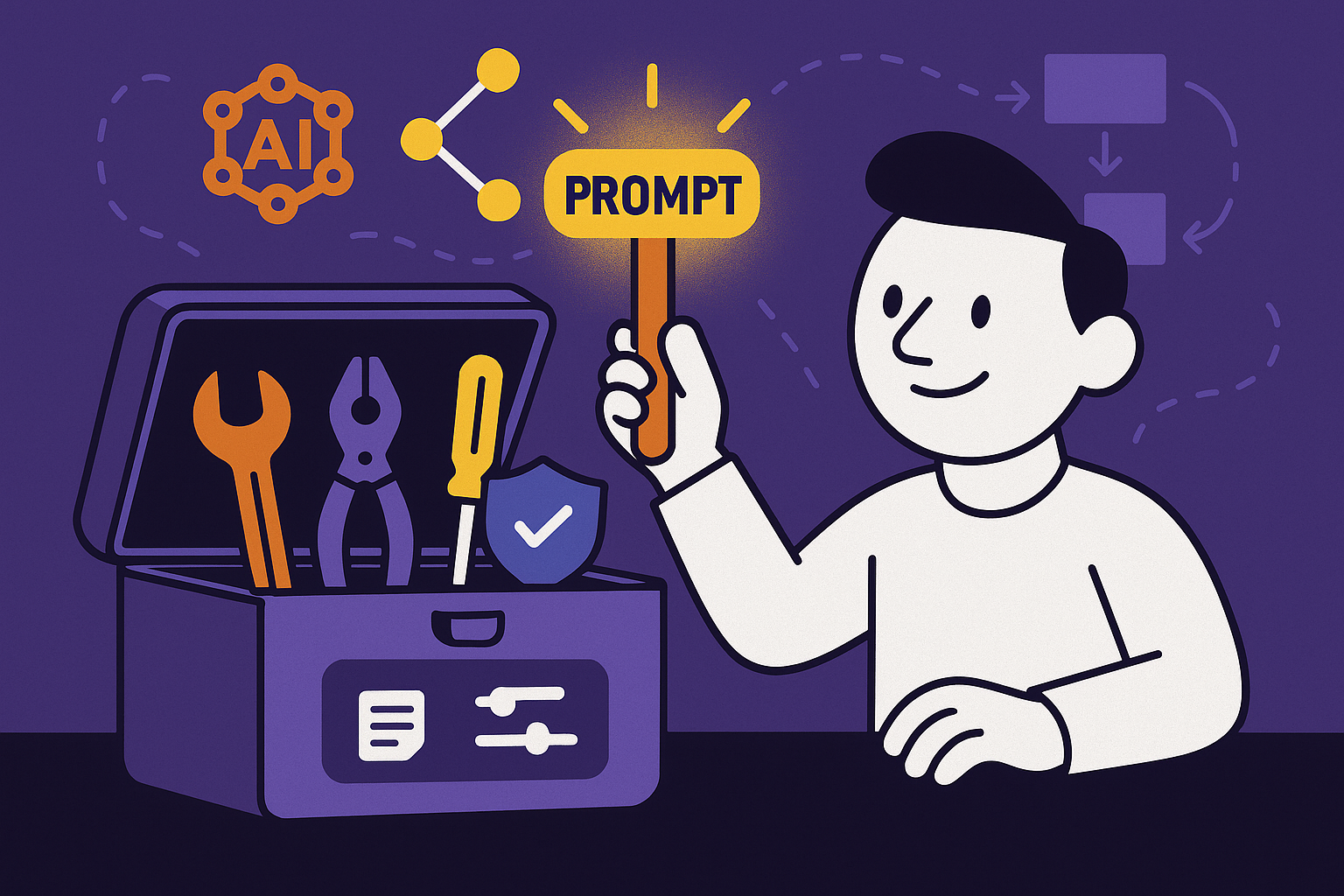As AI adoption accelerates across industries, more businesses are turning to tools like ChatGPT to streamline content, ideation, and customer engagement.
But the problem lies in the fact that just because you’re using AI, doesn’t mean you’re using it well.
And as a result, poor prompting is quietly costing you time, consistency in output and credibility.
At Omni Online, we’re seeing a wave of clients embracing AI, which is amazing! But the results of their efforts often fall short, especially when their copy screams AI.
We get it, it sounds almost comical that we’re pointing out that AI sounds like AI. Who would have thought?
But here’s the thing, people trust people. Your customers won’t be inclined to purchase from you if they read your copy and it sounds robotic and totally off-brand. It completely weakens the trust they have with you.
If you want your AI-generated content to sound strategic, human, and on-brand, prompt engineering is the skill you need to master.
What Is Prompt Engineering?
Think of prompt engineering as writing a comprehensive brief…for a robot.
It’s the art of asking AI the right questions, in the right way, to get the output you want.
And it’s not about being techy, it’s about being specific, structured, and strategic.
Why It Matters:
- Saves hours of trial-and-error
- Makes AI a productive team member that actually gets it right (and responds well to your feedback, since we all need feedback to enhance our results)
- Produces copy that aligns with your brand…that you can actually use
- Helps you scale content without scaling your budget
The clearer your prompts are, the better the output will be, and therein lies the art of prompt engineering. Those who master it, will maximise the benefits that generative AI has to offer.
Mistakes to Avoid with ChatGPT (We See These All the Time)
We get it, it can be tedious to explain the whole situation to ChatGPT whenever you need something done, but it’s important to be aware of your shortcomings and how to fix them.
1. Vague Prompts
Asking ChatGPT to “create a social post” is like asking a freelancer to “do marketing.” You’ll get fluff (and not productive fluff, the generic kind).
Omni Recommended Fix: Use specific formats to structure your prompts like the R.A.C.E. framework:
- Role: Tell the AI who it is.
When you define a clear role, the AI responds with the mindset, vocabulary, and decision-making of that persona.
Example: Act as an expert social media marketing specialist, working for our Female Activewear eCommerce brand [insert name], based in Sydney, Australia.
- Action: Describe exactly what you want the AI to do.
Be direct and outcome-oriented. What’s the job to be done?
Example: “Write an Instagram caption for our upcoming static post showcasing our newest launch of the [insert name] line. I’ve attached the image for your reference.”
- Context: Paint the picture, include your audience, offer, tone of voice, and objective.
Example: “The goal is to promote the new line and generate appeal amongst our target audience. Our audience is women in Australia aged 20-35 who live active lifestyles and want to be comfortable and stylish all at the same time. Our brand voice is [insert brand voice]”
- Execution: Specify how you want the output delivered, think; format, length, structure, style, constraints.
Example: “Keep the caption concise, between 50-80 words, and add 3 relevant hashtags.”
2. Trying to Do Too Much at Once
Asking ChatGPT to “plan our content for the next three months across all platforms” sounds like an efficient way of knocking out the dreaded content calendar, but the result?
Jumbled priorities, inconsistent tone, and content that’s neither strategic nor usable. Which often leads to ditching the use of AI for this task all together.
Omni Recommended Fix: Break tasks down into smaller, sequential prompts.
For example:
- Start with: “List 3 monthly themes for our Instagram content focused on sustainability.”
- Then: “For Theme 1, suggest 5 post ideas, including a strong hook, copy that aligns with our brand tone and CTA.”
- Then: “I like posts 1, 3, and 4. Begin writing those captions, tailored for eco-conscious millennials.”
This approach ensures your content calendar is aligned with campaign goals and feels tailored, not templated.
3. Not providing examples
Imagine you start a new role, and you’re asked to complete tasks with no reference of how the company currently completes said tasks and current outputs.
Sure, you’ll be able to get it done. But if you were provided references and examples? Your work won’t only be of more brand-aligned quality, but there will be less back and forth between you and your manager.
It’s the same with AI, if you provide references of what you want and existing examples of the output you want, then AI will be better able to meet your requirements.
Omni’s Recommended Fix: Create a document of existing examples of the particular outputs you want and upload that, along with your prompt into ChatGPT. For example, if I want help with next month’s content calendar, I can upload the copy and assets used for last month’s calendar, along with our brand’s guidelines, to my prompt.
3. Overusing Vague Language
“Make it catchy” or “more engaging” doesn’t mean much to a machine. Especially since what may be catchy to AI is cheesy to you (we can’t be the only ones who cringe at the some of the things ChatGPT says)
Omni’s Recommended Fix: Replace subjective terms with concrete direction and language with intent:
- “Add urgency and emotional triggers”
- “Make it emotional and benefit-driven.”
4. AI Fingerprints (Yes, They’re Obvious)
We can spot AI copy a mile away; overly polished phrasing, robotic rhythm, and yes, em dashes galore.
Omni’s Recommended Fix:
- Replace em dashes with commas or full stops
- Remove clichés like “in today’s fast-paced world”
- Read the output aloud, it should sound human, and if it doesn’t edit it accordingly.
- Utilise tools such as Clean Paste to remove hidden AI watermarks, and make your content sound more human
Quick Wins: Omni’s Top Prompt Engineering Tips
To make the most of AI without sounding like it wrote itself, here’s what we recommend:
- Build a prompt template library – reuse what works
- Upload brand documents – AI performs better with context, and having brand documents which you upload reduces the amount of context you need to repeatedly add into your prompts.
- Create a Custom GPT – If you’re a frequent user, tailor ChatGPT to your brand tone and audience (this requires a paid account)
- Edit the AI’s output – Even great prompts will still require you to go back and add in a layer of a human into the output.
Final Thoughts: Poor Prompts Are Costing You – Learn How To Prompt Effectively
AI is powerful, but without structured prompts and human editing, it can undermine your brand voice. At Omni Online, we treat prompt engineering like any other marketing skill, it’s trainable, learnable, and critical to getting results when utilise AI.
If you or your team are already experimenting with ChatGPT but aren’t quite hitting the mark, it’s probably not the tool, it’s the prompt.Struggling to get the results you know AI should be delivering? Download our Free Prompt Engineering 101 Guide and start creating more effective prompts today.









